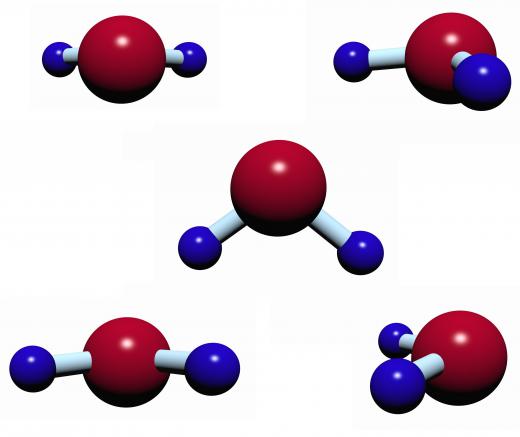At AllTheScience, we're committed to delivering accurate, trustworthy information. Our expert-authored content is rigorously fact-checked and sourced from credible authorities. Discover how we uphold the highest standards in providing you with reliable knowledge.
What Are Convection Currents?
Convection currents are movements caused by temperature changes in liquid or gaseous bodies. In such bodies, warmer material tends to rise, displacing cooler matter, which is circulated elsewhere; the continuous movement created by this process is known as a convection cell. Convection currents are responsible for many phenomena in the natural world, although their importance is often overlooked. Oceans, storm clouds, and the earth’s crust are all large-scale systems affected by these currents. On smaller scales, they can be observed in a pot of boiling water or a cup of coffee.
Heat causes individual molecules of matter to move rapidly. In a fluid, meaning in this case any liquid or gaseous substance, these heated molecules expand, becoming less dense. This causes them to rise within the fluid, displacing any cooler molecules already present. These cooler molecules will move elsewhere in the fluid; if they encounter a heat source, they will become agitated and rise, while the previously heated molecules will cool and descend. This effect creates convection cells, which in turn causes convection currents.

Convection currents cause the effects that can be seen in a pan of water heating on a stove. The water at the bottom of the pan, closest to the burner, heats rapidly and rises to the surface. Bubbles demonstrate the agitation of heated water molecules, which circulate the heat until all the water is boiling. The effect can be more readily observed by pouring cream into a hot cup of coffee. Even without stirring, the cream will start to circulate through the hotter coffee, and the color difference in the two liquids makes the patterns of convection easy to observe.

On a very large scale, convection currents govern the motion of the atmosphere around the Earth. Air heated by the sun moves into cooler regions and areas, causing weather patterns to change. Clouds are created when warm moisture-bearing air rises and encounters cooler air at higher elevations. The actions of convection cells on clouds can cause thunderstorms and, occasionally, more spectacular events. Tornadoes and hurricanes both result from the violent agitation of air and moisture caused by heat moving through the atmosphere.

Among their various other effects, convection currents are also responsible for earthquakes and seismic activity. The Earth’s surface is made up of a series of solid land masses floating on currents of liquefied rock. This subterranean liquid, called magma, is subject to the motion of convection cells, just as other liquids are. Convection currents in the magma can cause the land masses, called tectonic plates, to rise or collide with each other. This can result in volcanic eruptions, earthquakes, and other catastrophic seismic activity.
AS FEATURED ON:
AS FEATURED ON:















Discussion Comments
@Melonlity -- That's where things get somewhat confusing. All ovens use convection, but something called a "convection oven" is quite a bit different from something that is not called a convection oven.
Why? A convection oven is simply a regular old oven with a fan built in to distribute heat evenly. In an oven without a fan, food doesn't cook as evenly. Convection currents are flying around, but a fan is needed to force them into patterns that allow for even cooking.
So all ovens are convection ovens but something called a convection oven just has a fan in it to allow for even cooking. Confusing? A little bit...
Convection currents are also what allows your oven to work. When you are baking something, those convection currents move throughout the oven and that is why food heats evenly. The currents keep circulating through the oven and that means food cooks evenly.
Post your comments